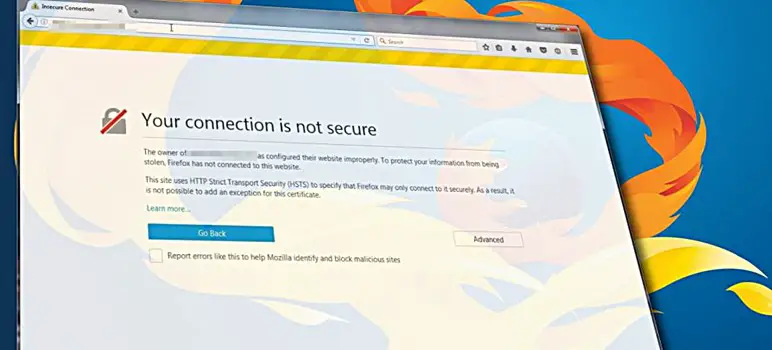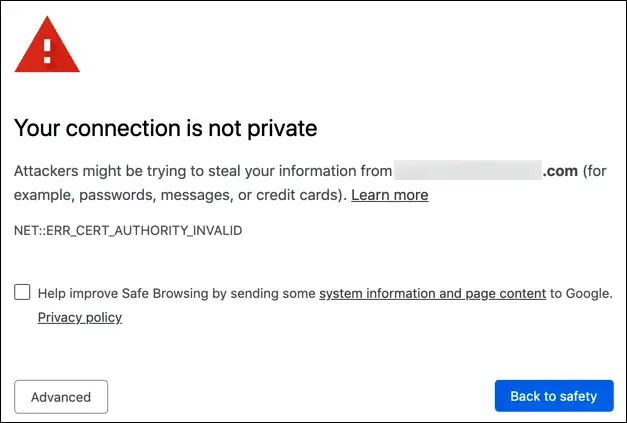In today’s digital world, ensuring a secure connection between users and websites is paramount. However, encountering an SSL connection error can be frustrating for both website visitors and owners. If you’re experiencing such an issue, fear not! This article will provide you with a detailed step-by-step guide on how to fix an SSL connection error and restore a secure browsing experience. Read on to discover effective solutions and actionable tips.
Section 1: Understanding SSL Connection Errors
1.1 What is an SSL Connection Error?
When a user’s browser encounters an SSL connection error, it means that there is an issue with the secure connection between the website and the user’s browser. This error prevents the establishment of a secure HTTPS connection, potentially exposing sensitive data to security risks.
1.2 Common Causes of SSL Connection Errors
- Expired or Invalid SSL Certificate: Certificates have an expiration date, and if not renewed, they can cause SSL connection errors. Additionally, if a certificate is incorrectly installed or contains incorrect information, it can trigger an error.
- Server Configuration Issues: Improper server configuration settings, including SSL/TLS protocol and cipher suite configuration, can result in SSL connection errors.
- SSL Handshake Failures: Errors during the SSL handshake process, such as mismatched time and date settings or outdated browser versions, can lead to connection errors.
- Mixed Content: When a webpage contains both secure (HTTPS) and insecure (HTTP) content, modern browsers may block the loading of insecure content, causing SSL connection errors.
1.3 Impact of SSL Connection Errors on Website Visitors and Owners
SSL connection errors can have negative consequences for both website visitors and owners. Visitors may be prevented from accessing a website, experience warnings about potential security risks, or lose trust in the website’s credibility. For website owners, SSL connection errors can lead to a decrease in traffic, lower search engine rankings, and damage to the website’s reputation.
Section 2: Troubleshooting SSL Connection Errors
2.1 Solution 1: Check the SSL Certificate
To fix an SSL connection error caused by certificate-related issues, follow these steps:
- Verify Certificate Validity: Check if the SSL certificate is valid and has not expired.
- Ensure Correct Certificate Installation: Ensure that the certificate is properly installed on the server.
- Check Certificate Chain: Validate the certificate chain to ensure it is complete and properly configured.
- Use a Trusted Certificate Authority (CA): Make sure the SSL certificate is issued by a trusted CA.
2.2 Solution 2: Review Server Configuration
To address server configuration-related SSL connection errors, consider the following:
- Update Server Software: Keep server software up to date to ensure it supports the latest SSL/TLS protocols and cipher suites.
- Configure SSL/TLS Protocols and Cipher Suites: Use secure protocols and strong cipher suites while disabling weak ones.
- Address Mixed Content Issues: Identify and resolve any mixed content issues on your website by ensuring all resources (images, scripts, stylesheets) are served over HTTPS.
2.3 Solution 3: Addressing SSL Handshake Errors
If SSL handshake errors are causing the connection issue, take the following actions:
- Resolve Time and Date Issues: Ensure the server and client machines have accurate time and date settings.
- Update Browser and Operating System: Keep browsers and operating systems updated to the latest versions, as they may contain fixes for SSL-related issues.
- Clear Browser Cache: Clearing the cache helps eliminate any cached SSL certificates or configuration causing conflicts.
- Temporarily Disable Antivirus and Firewall: Some antivirus or firewall settings may interfere with SSL handshakes. Temporarily disable them to check if they are the cause.
2.4 Solution 4: Fixing Mixed Content Issues
To resolve mixed content-related SSL connection errors, perform the following steps:
- Identify Mixed Content Elements: Use browser developer tools or online tools to identify insecure content (HTTP) on your webpages.
- Update HTTP URLs to HTTPS: Replace HTTP URLs with their corresponding HTTPS versions.
- Use Relative URLs or Protocol-Relative URLs: Instead of specifying the protocol (HTTP/HTTPS) in the URL, use relative URLs or protocol-relative URLs.
Section 3: Additional Tips to Enhance SSL Configuration
3.1 Regularly Update SSL Certificates
Keep track of SSL certificate expiration dates and renew them before they expire. Regularly updating certificates ensures the continuous functioning of secure connections.
3.2 Enable HTTP Strict Transport Security (HSTS)
Implement HSTS headers on your website to enforce secure connections. HSTS instructs browsers to always use HTTPS for future visits to your website, reducing the risk of SSL connection errors.
3.3 Implement Content Security Policy (CSP)
By implementing a CSP, you can control which content can be loaded on your website, reducing the likelihood of mixed content errors and enhancing overall security.
3.4 Enable OCSP Stapling
Enable OCSP stapling on your server to improve SSL certificate validation performance and enhance security.
3.5 Optimize SSL/TLS Protocols and Cipher Suites
Regularly review and update your server’s SSL/TLS protocols and cipher suites to ensure the use of secure and up-to-date configurations.
3.6 Monitor and Review SSL Configuration
Continuously monitor your SSL configuration for any potential vulnerabilities or misconfigurations. Regularly review security reports and consult security professionals to ensure optimal SSL setup.
Conclusion
SSL connection errors can be resolved by following a systematic troubleshooting approach. By verifying SSL certificates, reviewing server configuration, addressing SSL handshake errors, and fixing mixed content issues, you can restore a secure browsing experience for your website visitors. Additionally, implementing best practices such as regular SSL certificate updates, enabling HSTS and CSP, and optimizing SSL/TLS protocols further strengthens your website’s security. Remember to monitor and review your SSL configuration periodically to ensure ongoing protection. Fixing SSL connection errors not only enhances user trust but also helps your website rank higher in search engine results.
Remember, with these practical tips and solutions, you can successfully fix an SSL connection error and provide a secure online environment for your website visitors.


